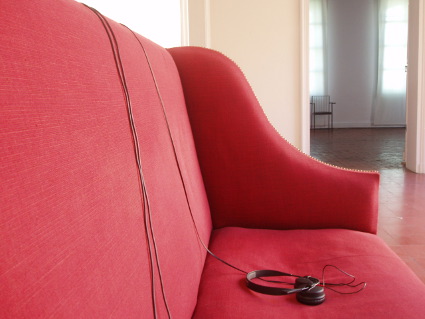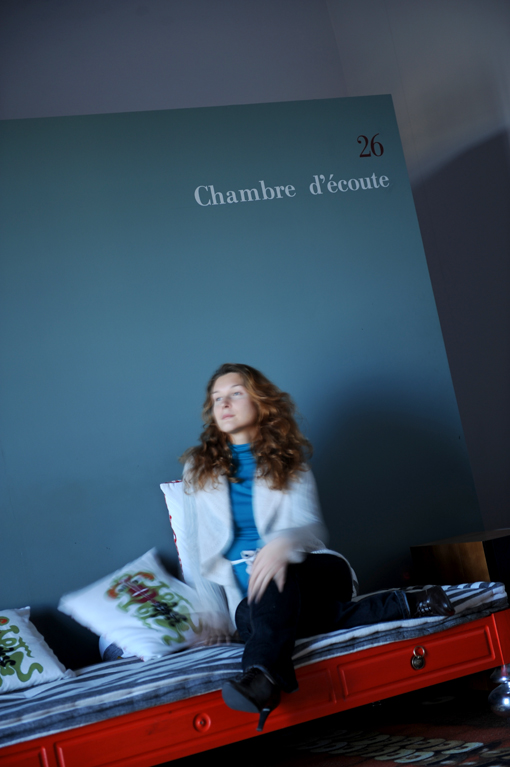Already groundbreaking in 1965 in terms of its focus on photography, Musée Réattu prides itself in once again being one of the top museums in France by embracing sound and radiophonic art, an original form of creation pushing the generally accepted boundaries of art, in an Acoustic Arts Department.
The challenge lies in addressing contemporary approaches to audiography on an equal footing with photography, painting and sculpture, in welcoming, within a new burgeoning collection and dynamic programme, artists who have granted and grant supremacy to sound to convey reality or act as a media for the imagination. To allow as many people as possible to accost these new climes where the ears act as both sight and touch to give a different perspective on the world.
A listening balcony implemented in 2007 on the 1st floor mezzanine represented an initial permanent facility with the museum. Equipped with headphones, this divan was less of an invitation to speak than to silence and an acoustic journey...A listening room, designed by Christian Lacroix, followed in 2008. A new version of this dedicated immersive room opens on 12th March 2020, resulting from a partnership with the association Phonurgia Nova and the Cnap (National Centre for Visual Arts).
A listening pod, a cocoon, (the name of which, according to the wishes of Marc Jacquin, refers to a famous painting by the Belgian surrealist René Magritte portraying a bedroom the central volume of which is filled by an apple ready to be bitten into (fruit of temptation?) It is on the first floor, its only window looks out over the sometimes languid sometimes turbulent Rhone flowing with aplomb.
Since the first day of the DAS activities for school children have introduced younger visitors to this form of art comparable to a ‘film without images’ whose images emerge from the free imagination of each listener. To counterpoint this programme, meetings with artists, curators, critics and art historians are publicly available, to put into perspective this creativity that originates in the 20th century avant-garde. Finally, extending its philosophy for sculpture and photography to the field of sound, the museum has a policy of commissioning inviting sound sculptors and audio, radio and podcast artists, to create works to resonate with the spirit of the place, and in line with the monumental and landscape heritage of the Camargue and the Roman town, building a bridge between nature, Roman culture and modernity.

